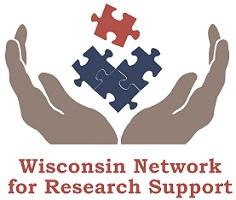- Dissemination and Implementation
- Engagement in Research
- HIPxChange
- Learning Health System
- Stakeholder Engagement
 Patient engagement in research has become increasingly prioritized in recent years, as patients can provide unique and valuable feedback to researchers on the design, implementation, and dissemination of studies from the perspective of people the research seeks to help. However, researchers often lack the tools to effectively engage patient advisors in the research process.
Patient engagement in research has become increasingly prioritized in recent years, as patients can provide unique and valuable feedback to researchers on the design, implementation, and dissemination of studies from the perspective of people the research seeks to help. However, researchers often lack the tools to effectively engage patient advisors in the research process.
To address this need, stakeholder engagement experts from the Wisconsin Network for Research Support (WINRS) at the University of Wisconsin – Madison have created a new toolkit to help prepare patient advisors to provide useful advice and work effectively with research teams. The toolkit, called Patient Advisor Toolkit 1: Orientation for Patient Advisory Committees (PAT-1), contains a comprehensive set of modifiable resources that provide step-by-step guidance on conducting orientations with patient advisors.
“Patient advisors” are patients, family members, caregivers, and other members of the public who advise researchers at one or more stages of a research project. They typically do not have professional roles in either research or health care domains. Orienting patient advisors at the beginning of a project to the project goal, the respective roles of all stakeholders, and other important information helps prepare patient stakeholders for their work and lays the groundwork for a successful patient-researcher partnership throughout all phases of the research process.
PAT-1 consists of several modules that can be tailored for each research project. There are eight essential modules that contain the information and tools needed to conduct a 2-hour orientation, as well as four optional modules that can be included based on the specific needs of the project. Each module provides an overview of learning objectives and background information, and a complete set of training materials, including an outline of the activities and steps, advance preparation needed, and a sample facilitation script. The toolkit also contains three appendices that have additional resources for planning, tailoring, conducting, and following up after orientation.
The toolkit was designed specifically for researchers who conduct clinical trials and want the benefits of engaging patients as advisors on research projects. Other researchers and organizations who want to develop institutional patient and family advisory councils or community advisory boards may also find the toolkit valuable.
Researchers and organizations can contact WINRS for help tailoring the PAT-1 materials or to request a “train-the trainer” program for their staff. (https://winrs.nursing.wisc.edu)
WINRS previously co-developed the Toolkit on Patient Partner Engagement in Research (TOPPER), which contains patient orientation materials that were developed and adapted for a Patient Centered Outcomes Research Institute project (principal investigator: Elizabeth Cox, MD, PhD). PAT-1 replaces TOPPER as WINRS’ current toolkit on orientation for patient advisors. A second toolkit, PAT-2, will be a complementary resource to help researchers plan and facilitate ongoing meetings with patient advisors. It is expected to launch in 2019.
More Information
- Patient Advisor Toolkit 1: Orientation for Patient Advisory Committees (PAT-1)
- Wisconsin Network for Research Support
- For more information about this project, please contact Gay Thomas (grthomas@wisc.edu) at the Wisconsin Network for Research Support (https://winrs.nursing.wisc.edu)
